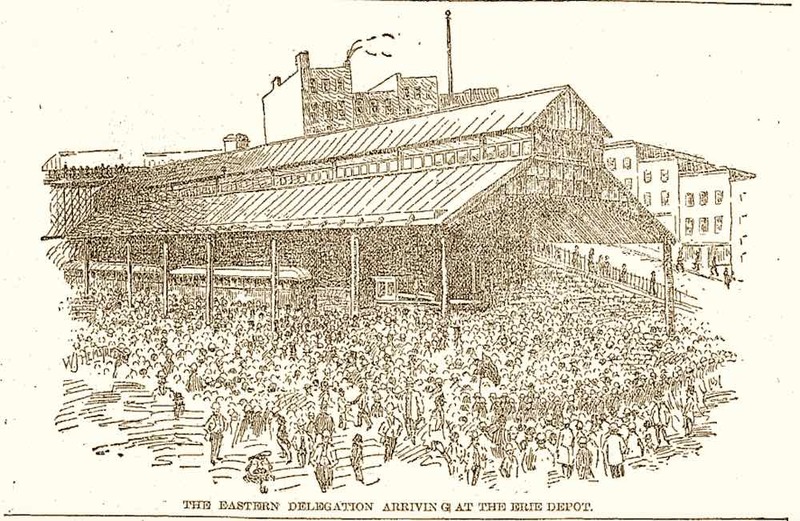The 1895 Republican National League Meeting
On the Road to William McKinley's Presidential Nomination

With the Second Industrial Revolution in full swing, large industrial cities in the East and Midwest were expanding rapidly. Cleveland was no exception. Recognizing that Ohio was becoming the political center of the nation, the Republican National League (commonly referred to as the League of Republican Clubs) chose the city as the location for its annual meeting in June 1895. The meeting would set the stage for greater moments in the near future, including the election of William McKinley (then Governor of Ohio) to the Presidency in 1896, and the consolidation of Republican leadership of the country until just before the outbreak of World War I. The National Republican League meeting placed Cleveland firmly on the map of partisan politics and ushered in a period of its growing centrality in the political arena.
The 1895 Republican National League meeting set the political tone for the Republican Party by serving as the catalyst which initiated a chain reaction setting up Governor William McKinley's 1896 nomination, resulting in his subsequent election. At the Cleveland meeting, Governor McKinley was already the party favorite and one of the proverbial stars of the show, among the various representatives including Ohio Senator Marcus A. Hanna, a good friend and ally of Governor McKinley. Other notable persons in attendance included William W. Tracy, President of the Republican National League, Edward B. Harper, Treasurer of the League, and the Honorable D.D. Woodmansee, President of the Ohio Republican League and "champion of the Republican cause" who was then serving his second elected term as President of the Ohio Republican League.
The Republican National League meeting was no small affair. Total attendance for this event in downtown Cleveland was in excess of two thousand representatives and another two thousand alternates. During the meeting, the League Executive Committee and leadership was headquartered at the now-defunct Hollenden Hotel near the Arcade. As the hotel became crowded with League members and news reporters, the Plain Dealer effectively summed up the atmosphere at the Hollenden, "All day long the delegates had dropped in for relief from the heat of the pavement... Down on the floor of the lobby, the crowd was increasing hourly. There were representatives from every section of the country and the hotel bore a metropolitan appearance." However, the Arcade was the center of the festivities.
One of the core issues for the Republican League meeting was, of course, the upcoming presidential election. A large proportion of the meeting was otherwise devoted to economic issues, upon which the Republican party constructed its ideological platform. Considerable issues for debate arose around the country's economy. The League was determined to counter the Democratic party's rallying cry of free silver, which the Republicans sought to attack by vigorously advertising and promoting the gold standard to squelch cries for the more vague-sounding free coinage. Given the fact that farmers suffering from years of drought and growing indebtedness sought relief in the expansion the nation's monetary supply through the coinage of silver, it is no wonder this was a key issue at the meeting. McKinley would run on the promise to maintain the gold standard, a position challenged by the pro-silver candidate of the Democrats and Populists, William Jennings Bryan.
The 50 years following the Republican National League meeting were a time of economic prosperity for Cleveland and other large northern cities. Ohio remained a key political battleground state. As a result, Cleveland continued to attract close scrutiny at every election. The attention helped Cleveland land two Republican National Conventions, in 1924 and 1936. After World War II, such cities lost industries and as a result, population as people left to find replacement work. Cleveland's downtown hotels aged and upkeep waned. Cleveland's Public Auditorium lost ground to other cities' more expansive new convention halls. Even though Ohio remained a key battleground state, Cleveland was no longer as attractive as a convention city, a situation that prevailed until the recent revitalization of downtown and addition of hotel and convention facilities helped the city land the 2016 RNC.
Images






